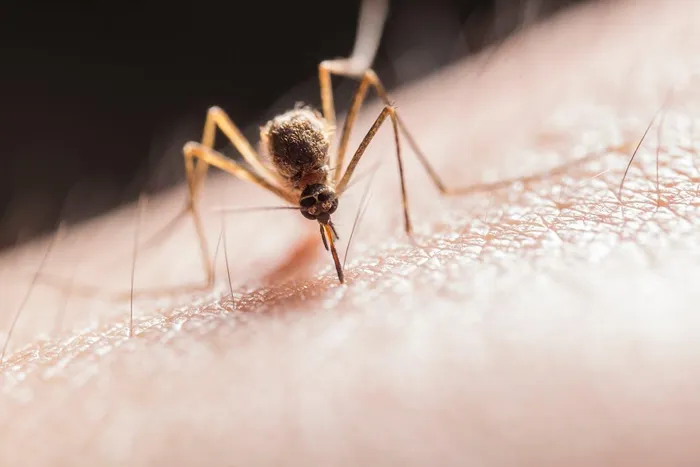Chikungunya on the rise: essential tips to stay safe this summer

According to the World Health Organization (WHO), from January to September 2025 alone, over 445,000 suspected and confirmed cases of chikungunya were reported across 40 countries, resulting in 155 fatalities.
Image: Jimmy Chan /pexels
It’s mid-summer in the southern hemisphere, the kind of sunlit days we live for. But rising humidity and warm nights also signal a more insistent companion: mosquitoes.
If you’re packing your bags, planning hikes or lazy weekends by the sea, now is a good time for a quick reality check. Mosquitoes aren’t just a nuisance in some regions; they carry viral illnesses that can leave you bedridden for weeks.
One of those is chikungunya, a mosquito-borne virus that has reappeared with vigour in recent years.
According to the World Health Organization (WHO), between January and September 2025, over 445,000 suspected and confirmed cases of chikungunya and 155 deaths were recorded across 40 countries.
This year, the WHO has reported a resurgence of the chikungunya virus (CHIKV), a mosquito-borne illness that’s resurfaced in parts of the world, including countries close to home in Southern Africa.
And while it’s not a cause for panic, it’s certainly a cue to get smart about prevention.
According to the WHO’s 2025 update, over 445,000 suspected and confirmed chikungunya cases have been reported globally between January and September, leading to 155 deaths across 40 countries.
The Americas reported the highest case numbers this year, followed by regions in Europe, mainly linked to the French territories in the Indian Ocean.
Closer to home, Mauritius recorded over 1,500 cases, while Kenya, Senegal, and Comoros also reported smaller outbreaks.
So far, South Africa hasn’t reported any major spikes, but the conditions that fuel outbreaks are present here too: hot weather, standing water and the buzzing rise of Aedes aegypti and Aedes albopictus mosquitoes, the same culprits that spread dengue and Zika.
The WHO warns that increased global travel, climate change, and poor water management make it easier for diseases like chikungunya to spread even to new regions. “The presence of these vectors poses a continuous threat,” the WHO noted in its September 2025 report.
Chikungunya explained
Chikungunya (pronounced chik-en-gun-ya) is caused by a virus transmitted through the bite of an infected female mosquito, mostly during the day. Once bitten, symptoms can appear in 2–12 days, often starting with sudden fever and severe joint pain, followed by fatigue, headache, nausea, and sometimes a rash.
According to the Centers for Disease Control and Prevention (CDC), most people recover fully, but joint pain can linger for weeks or months. While it’s rarely fatal, it can be serious for newborns, the elderly, or those with underlying health conditions.
There’s no specific cure, but the illness can be managed by resting, staying hydrated, and treating fever and pain with paracetamol (not anti-inflammatory drugs like ibuprofen until dengue is ruled out). Once you recover, you’re likely immune for life.

The WHO has emphasised that increased global travel, climate change, and inadequate water management systems contribute to the spread of chikungunya
Image: Masum Saieed /pexels
Mosquitoes and the Southern African summer
Southern Africa’s warm, humid summer is the perfect breeding season for mosquitoes. They thrive in standing water, from flower pots and gutters to forgotten buckets in the backyard.
And while chikungunya isn’t common in South Africa right now, we know how easily mosquitoes cross borders, especially with regional travel picking up again.
Prevention starts with awareness. People often think mosquito-borne diseases are a tropical issue, but travel, trade, and climate change are changing that picture. The best protection is simple: avoid bites and reduce breeding spots,” she explains.
How to protect yourself and others
You don’t need to cancel your holiday plans. But a few mindful habits can go a long way toward keeping mosquitoes (and the viruses they carry) at bay:
Use mosquito repellent daily: Go for repellents that contain DEET, picaridin, or oil of lemon eucalyptus. Reapply after swimming or sweating.
Cover up during peak hours: Mosquitoes love dawn and dusk. Loose, light-coloured clothing helps reduce bites.
Sleep under mosquito nets: Especially if you’re visiting rural or coastal areas where mosquitoes are plentiful.
Eliminate standing water: Empty buckets, birdbaths, and even small containers every few days. That’s where mosquitoes breed.
Keep your home mosquito-free: Use window screens, fans, and plug-in repellents. Mosquitoes are weak flyers; airflow helps keep them away.
Stay alert after travel: If you’ve been to areas with recent outbreaks (like Mauritius or Kenya), watch for symptoms within two weeks of returning and see a doctor if you develop fever or joint pain.
The WHO has approved two chikungunya vaccines for use in certain countries, but they’re not yet widely available. Health authorities continue to review their safety and effectiveness. For now, prevention remains the best protection.
There’s no need to trade your sundress for a hazmat suit, just a gentle reminder that health awareness belongs in your travel kit, too.